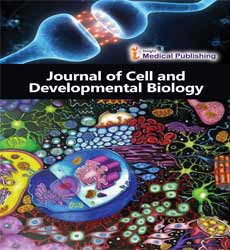In-vitro Cell Culture of Aquatic Invetebrates ÃÆâÃâââ¬Ãâââ¬Â Penaeus Shrimps
Huarong Guo*
Key Laboratory of Marine Genetics and Breeding, Ministry of Education, and Institute of Evolution & Marine Biodiversity, Ocean University of China, Qingdao 266003, China
- *Corresponding Author:
- Huarong Guo
Key Laboratory of Marine Genetics and Breeding
Ministry of Education, and Institute of Evolution & Marine Biodiversity
Ocean University of China, Qingdao 266003, China
Tel: +86 18854261970
E-mail: huarongguo@ouc.edu.cn
Received date: September 12, 2017; Accepted date: September 13, 2017; Published date: September 22, 2017
Citation: Guo H (2017) In-vitro Cell Culture of Aquatic Invetebrates — Penaeus Shrimps. J Cell Dev Biol. Vol. 1 No. 1:3
In-vitro cultured animal cells have provided us a very powerful tool to study virology, molecular biology, cell biology, and immunology, etc. In contrast to mammalian, fish and insect where the development of a variety of cell lines has become routine, the establishment of cell lines from marine invertebrates has been encountered with big obstacles, and up to date, there is still no continuous cell line established from marine invertebrates.
Penaeus shrimp is a class of economically important aquaculture speices such as Litopenaeus vannamei, Penaeus monodon, Fennerropenaeus chinensis and Marsupenaeus japonicus. The frequent outbreaks of shrimp viral diseases have markedly limited the development of shrimp aquaculture in the world. Thus the development of continuous shrimp cell line is urgently needed because the in-vitro cultured shrimp cells can serve as useful and indispensable tool for the proliferation and characterization of shrimp viruses as well as production of effective diagnostic reagents and anti-virus vaccines.
Despite numerous attempts, no continuous shrimp cell line has yet been established due to the absence of active mitosis and failure to be immortalized in the in-vitro cultured shrimp cells. We have established an improved primary cell culture and subculture system as evidenced by rapid initiation of cell migration (2-3 h after seeding) and formation of 70%~80% confluent cell monolayer (within 16~24 h), and efficient detachment (>90%) and reattachment (50%-60%) with digestion solutions of HyQTase and ECDS, respectively. Recently, an embryonic cell culture system has been developed from the limb bud stage embryos of M. japonicas, which includes the effective disinfection and sterilization of shrimp embryos, rapid disaggregation of vialble embryonic cells and cell mass, and optimization of shrimp medium. The dissociated embryonic cells attached within 3 hours after seeding and differentiated into fibroblast and neuron like cells. Some of the fibroblast-like cells behave like cardiac muscle cells with rythmic beating. The embryonic cell monolayer can survive over 23 days and be subcultured only once due to the absence of active mitosis.
During our attempts on the primary cell culture of Oka organ, haemolymph and early embryos, it was found that all the isolated shrimp cells stop dividing rapidly once in-vitro cultured. To initiate the mitosis of the in-vitro cultured shrimp cells, much works has been tried in our laboratory but still failed. For example, foreign expression plasmids could be successfully delivered into the cytoplasm of shrimp cells but the nuclear entry efficiency for the plasmid DNA was extremely low in the mitosis-arrest shrimp cells by liposome-mediated gene transfer method, resulting in the failure of over-expression of foreign genes, even shrimp-source promoter of translationally controlled tumor protein (TCTP) and shrimp virus source promoter of immediate early gene (ie1) of shrimp White Spot Syndrome Virus (WSSV) are used. And also, we improved the commercial pantropic retrovirus-mediated gene transfer system by including the envelope proteins of VP19 and VP28 from shrimp WSSV virus, but the infection efficiency to mitosis-arrest shrimp cells was still unsatisfactory. Now we find that the lentivirus-mediated gene transfer system may have higher infection efficiency than liposome- and retrovirusmediated methods in shrimp cells.
In a word, future success in the initiation of mitosis in the in-vitro cultured shrimp cells is the finishing step to the establishment of continuous shrimp cell line.
Open Access Journals
- Aquaculture & Veterinary Science
- Chemistry & Chemical Sciences
- Clinical Sciences
- Engineering
- General Science
- Genetics & Molecular Biology
- Health Care & Nursing
- Immunology & Microbiology
- Materials Science
- Mathematics & Physics
- Medical Sciences
- Neurology & Psychiatry
- Oncology & Cancer Science
- Pharmaceutical Sciences
